|
The northern leopard frog has some color variations from nearly brown through vivid lime green. I'd say this one is pretty far into the lime green zone.
0 Comments
At the Firestone Center there are a fair number of gladiator frogs (Hypsiboas rosenbergi) but we don't really see them all that often. However, right now they are breeding and it is easy to spot the nests. On my day hike of the property I found a couple nests and visited them last night to see what was up.
These frogs scoop out a roughly to almost perfectly circular nest in the mud near the shore of ponds and marshes. This holds water even during periods without too much rain, such as now during the dry season, an odd time for frogs to decide to breed. Here a male has called in a mate and they are in amplexus, which is the frog version of mating. The female will lay eggs with the male on top depositing sperm on them as they are laid. I took their picture and left them to go on about making more frogs. A number of the frogs actually lay their eggs in vegetation over water, not in water. Here is a mass of newly hatched tadpoles that are still on the leaf and haven't dropped into the water yet. I am thinking these are hourglass frogs, but unsure.
The red-eyed tree frog is a truly gorgeous animal, and we are lucky to be able to see them at certain times of the year. Like now. Tonight we saw four of them and such a treat. We have two species here but we only saw the more common one tonight on a night hike.
Okay, so what is so cool about hourglass frogs. They are just little treefrogs with some sort of hourglass shape on their back. Quite pretty little things, but there has to be something to set them apart.
Oh yeah, they are the only vertebrate species known that can lay eggs either in the air or below the water. How amazing is THAT! And I love a good Latin naming joke. These frogs have patterns on all the legs but are almost always blank on the upper thigh (clearly seen here). Some call this frog the pantless treefrog because of this. I don't know who gave this frog its Latin name, but ebraccatus means without pants in Latin, which I find hilarious. I love glass frogs, and they are some of the more rare frogs at the FCRE. We have a couple species but even with putting in time and effort we can't find them. Then I am just walking down a trail at night and bingo, there it is. Allow me to present the reticulated glass frog in all it's glory. Beautiful animal, and I've mentioned this before but they get the name "glass frogs" because their skin is pretty much see-through. As with most of what I photograph I did not handle the animal at all so no pics of the internal organs which can clearly be seen when looking at the underside. The weather on day 1 was just so excellent that after dark I couldn't resist taking a short walk down along the Rio Cacao. These are known as Heliconia bugs, and are, not surprisingly, true bugs that live and feed almost exclusively on the plant Heliconia. I see them every year in one patch along the river and they were there again this year. Attractive bugs that are territorial on the plant and males will defend their turf. If another bug approaches things can quickly escalate into a weird reverse wrestling match. The two bugs turn around and grapple backwards using their strong rear legs. Not sure how the winner is determined but something about who can jam their legs spines into the other one's belly the hardest and make them give up. Tink frogs, so named because they make a very loud "tink" sound, are super common. But we have a number of species of them that require handling the animal to ID them so I will just show a photo of one without guessing at which one it is. Harvestman aren't really true spiders, but have those creepy 8 legs and sure act like spiders. A tiny body and very long legs give these the common name "daddy long legs." Okay, so let's get real creepy to finish this up. Another non-spider in the 8-legged category is the tail-less whip scorpion (Amblypygidae family). Latin factoid: amblypygid means "blunt butt" hence the "tail-less" part of the name. There are two genera of these here, Phrynus and Paraphrynus, but you have to put the front spiny part (the pedipalp) under a microscope just to see a little obscure almost spine in order to figure out which genus it is. So no ID other than family on this character. The body is about two inches long, so not a particularly huge one but decent sized. However the legs are very long and this animal would easily be 10 inches from leg tip to leg tip. But these are WAY creepier looking that I can show in a full animal image, so here is a close up of the head area. Those spines are used for spearing insect prey, and although it looks nasty is essentially harmless to humans.
Can't call it spring without a photo of another distinctive species from early spring. The spring peeper (hyla crucifer) gathers at mostly small ponds with woody vegetation around them and calls loudly and often. Darn near deafening when you walk into an area with a lot of them as it is a very piercing "peep" they make.
This photo was taken an hour ago at a small pond in the woods in Mingoville, Pennsylvania where there were about a dozen or so frogs calling. I didn't even know the pond was there, but just walked through the woods following the sound until I arrived. It is still early here but the trees are all nearing full leaf out and wanted to get a peeper photograph before they disperse. These frogs are only about 3/4 inches long and have very camouflaged coloration so I rarely see them during the summer. Among the frogs and toads at the Firestone Center, two animals stand out as the biggest and baddest, so... Tonight it was just pouring rain so we decided, ridiculous as it may seem to sane people, to go out for a walk along the Rio Cacao and even up into the off-trail stuff along infeeder creeks looking for glass frogs. Some very interesting thrashing around in steep, slippery conditions yielded no glass frogs, but we saw both of the trophy species of toads and frogs. First up, the Cane Toad (Rhinella marina). This is an invasive species in many parts of the world, but here it is a native species. And they can get big to the point of huge. This one is not a gargantuan specimen, but would weigh in at over a pound. It was sitting near the Fish Pond on an old hollowed out stump. And just look at those massive poison glands behind the eyes and ears! Grab this guy and you will really need to wash your hands before eating your trail mix. And the second big boy is the bullfrog. Sadly I can not be exactly sure of the species, but it is in the Genus Leptodactylus and very likely the species bolivianus, but there are two similar really big frogs here and don't want to mis-identify this one. This frog, like the other photos I am posting or will post from the night walk, was taken in heavy rain, so please forgive the various white circles in the pics as there was water everywhere. For those interested, all photos on this rainy night hike were taken with a waterproof Olympus TG-3 camera.
The tropical bullfrogs are very nice-looking frogs, and amazing (capable of catching and eating things such as bats and snakes). They can get quite large, like 7 inches from nose to butt, and later in the walk we actually saw one pretty darn close to this size and one of the biggest frogs I have ever seen. McFarlane tried to grab it for a photo "in-hand" for some scale to show the sheer size of the thing. And failed. Massive and super strong, plus being slippery as all get out, these are hard animals to catch with a quick grab. And so it goes. The green and black poison dart frog is a very striking animal. In general the coloration is considered to help let predators know not to try and take a bite, as it has poisonous secretions.
But they are famously hard to photograph without a studio and very compliant frog (they are kept as pets so this is possible). I tried to photograph this one to bring out the deep black-hole-like blacks, and see that I burned out the greens. These frogs have a very bright neon green pattern, and here it looks far too white. I might get another chance to try again and see if I can bring out the greens without completely making the blacks look like, well, just deep black and not frog parts. They are not super common at the FCRE, but around mid-morning they can be found in dark, wet corners of the forest floor. |
AuthorKeith Christenson - Wildlife Biologist Categories
All
Author
Keith Christenson Wildlife Biologist Archives
September 2021
|


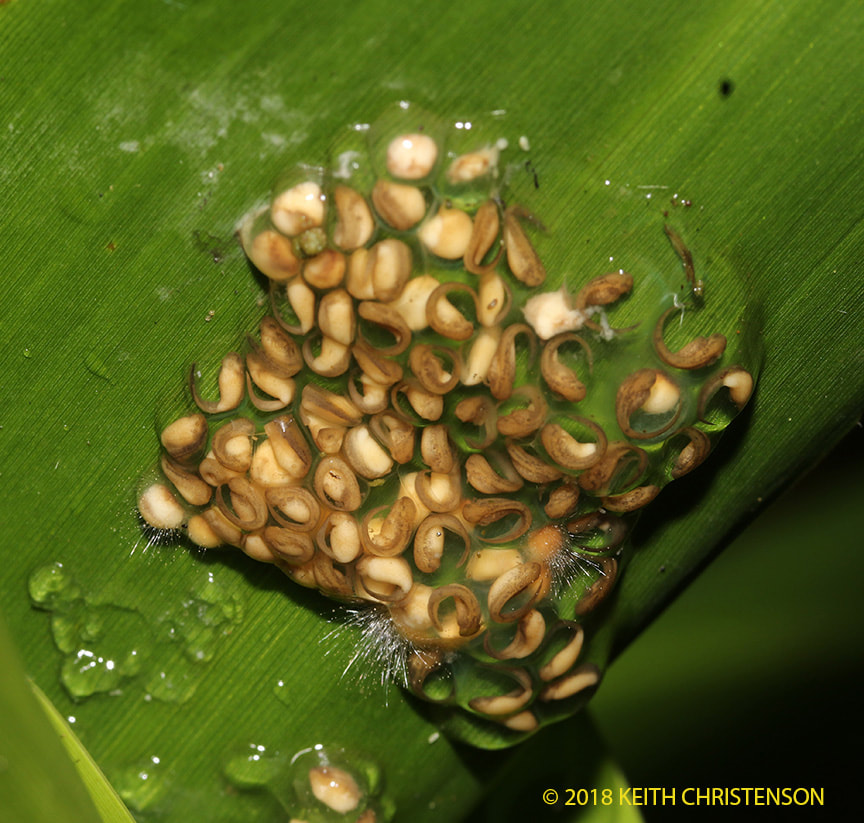
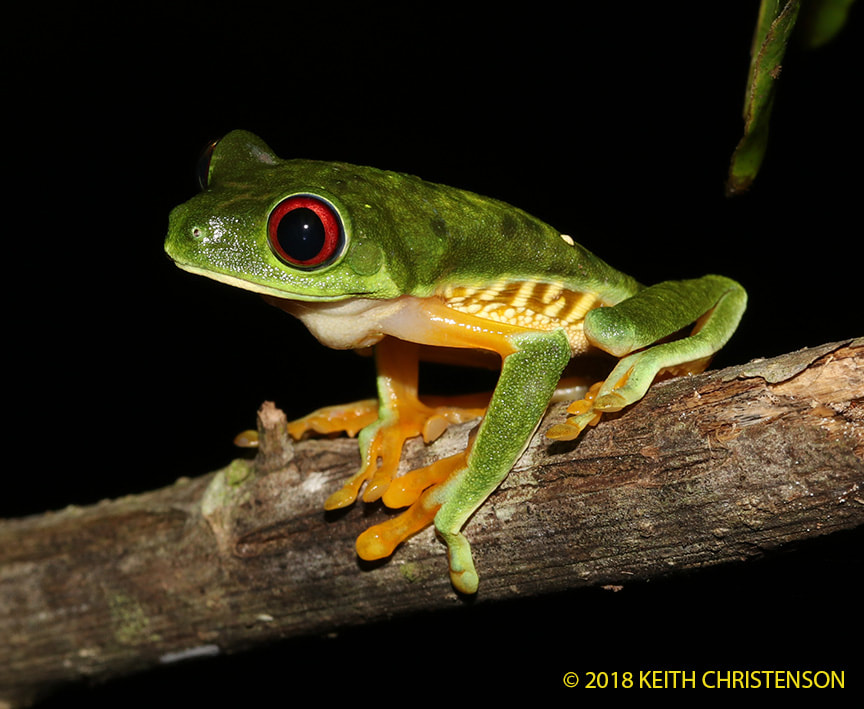
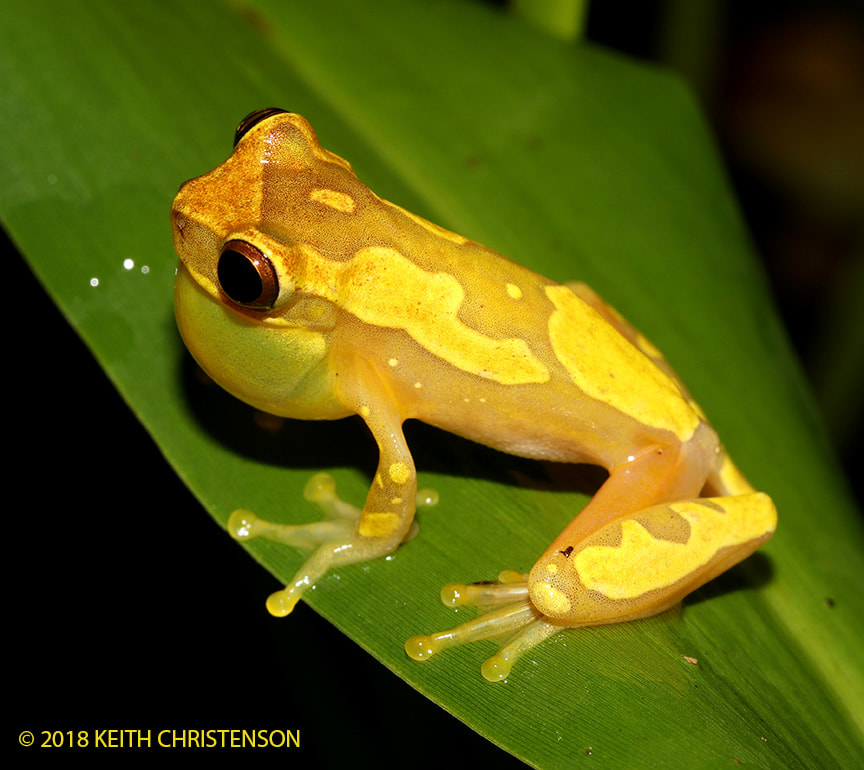
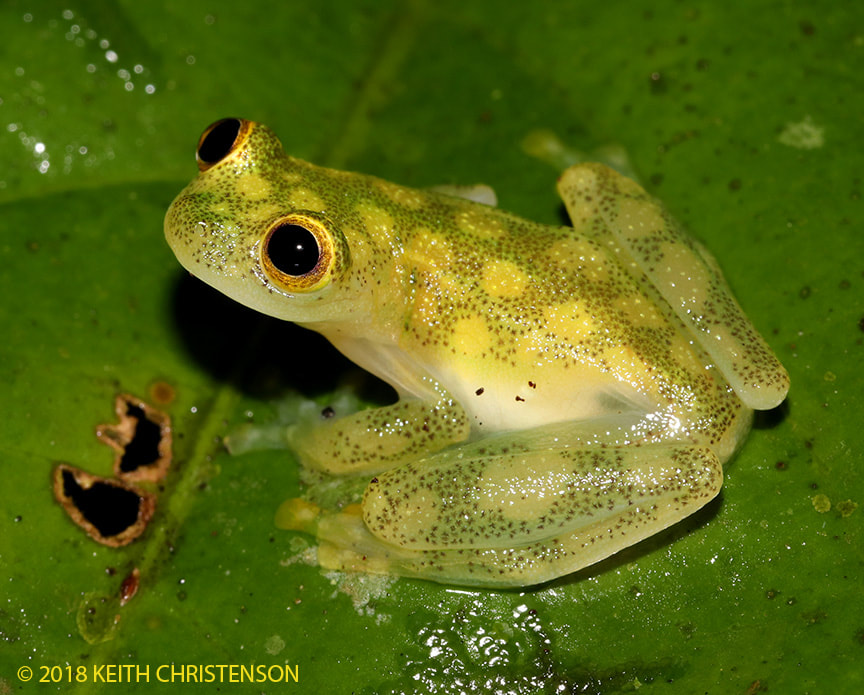





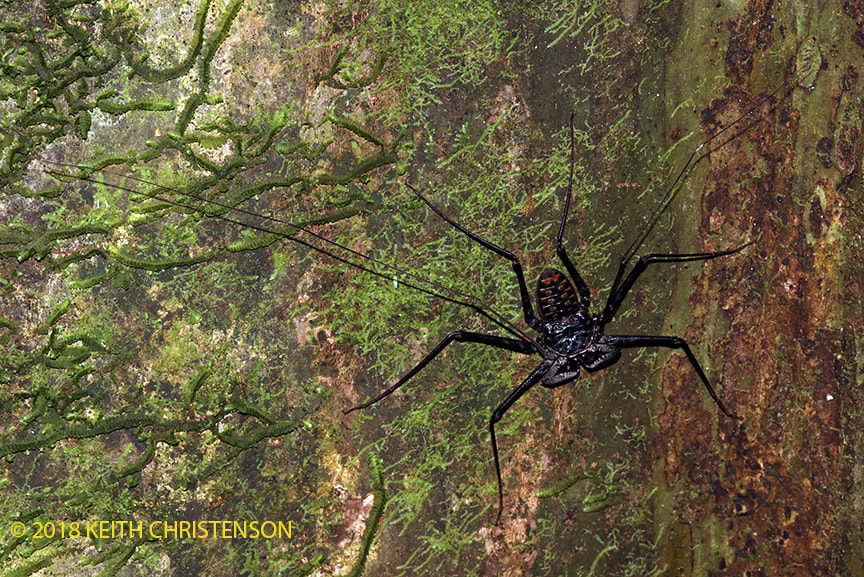



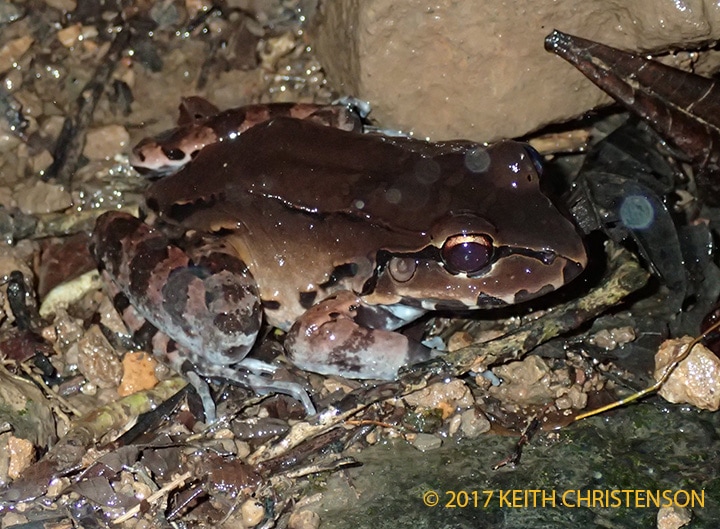
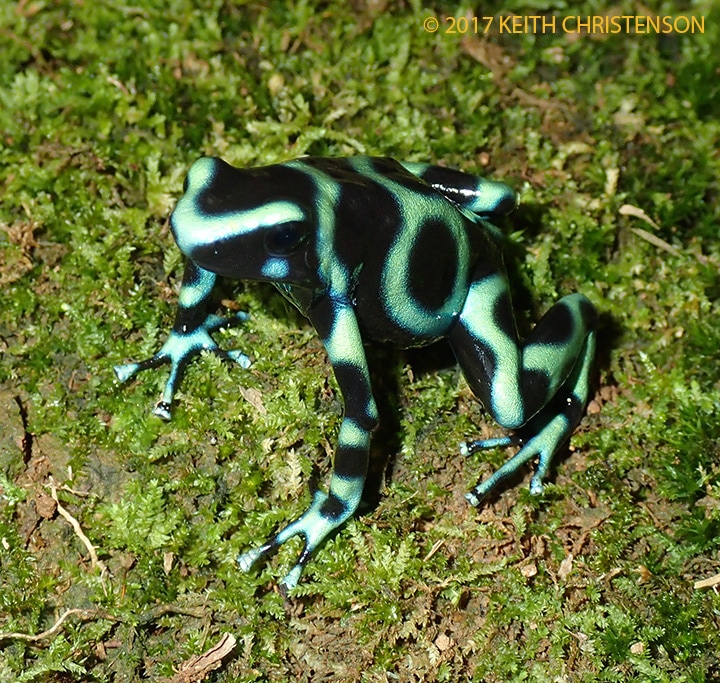
 RSS Feed
RSS Feed